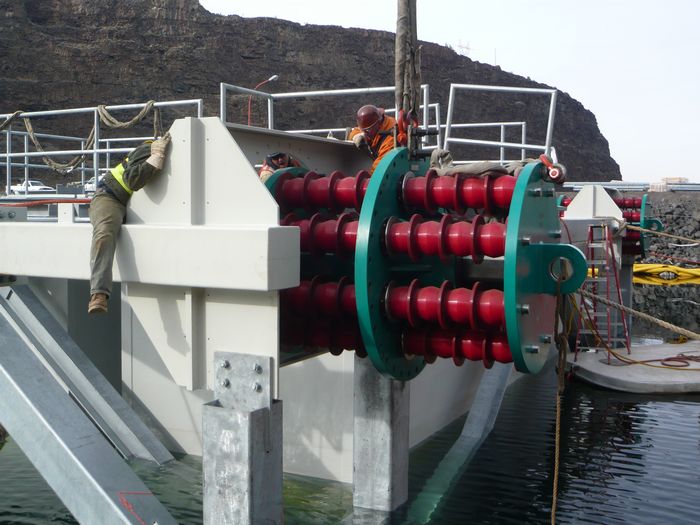Kastalon products help to restore the natural migration of spawning fish in the majestic rivers of the Cascade Mountains, while maintaining the source of green energy from the dams.
Alsip, IL–Looking down from the Cascade Mountains at the three majestic rivers rambling through the picturesque countryside in central Oregon, no one would ever suspect that the salmon and steelhead were swimming their way up those rivers for the first time since 1968.
Although a series of dams, built in the early 1960’s, created a dynamic resource for hydro-power, the fish passage system built into the design proved unsuccessful for the fish to find their way downstream for migration.
Through a unique partnership, the co-owners of the dams, Portland General Electric (PGE) and the Confederated Tribes of Warm Springs, spent several years developing a plan to improve the habitat for the fish.
The Barnard Construction Company and a team of engineers from CH2M Hill were commissioned by PGE and the tribes to design a system that would allow fish to be redirected for successful spawning migration without disrupting the source of green energy from the dams.
The unique solution involved constructing a 273-foot underwater tower and floating bridge from the floor of Lake Billy Chinook above the Round Butte Dam.
This massive structure’s one-of-a-kind design modified the current and temperature to mimic the natural conditions of the river for successful fish collection while maintaining water flow for power generation.
With the new collection station, the fish are efficiently transported downstream so they can continue on to the Columbia River and out to the ocean.
A key element of this project was determining a design for equalizing/dampening connectors that would join the floating apparatus with the stationary structure. These arrestors had to allow a full range of motion but provide predictable stability that could absorb storm forces and withstand seismic pressure.
After an extensive search, the engineers found Kastalon Polyurethane Product’s long-standing reputation for engineered to fit solutions to be a good choice to partner in the design and development of these unique polyurethane arrestor connectors.
Kastalon, a second generation family-owned business located outside of Chicago, accepted the challenge of providing a unique design and chemistry of polyurethane with the mechanical and physical properties that would give the strength and life expectancy the project required.
Today, after nearly two years of design, testing, and construction, the massive underwater tower and fish collection station rises from the floor of Lake Billy Chinook. For the first time since 1968 the migratory cycle for the fish has been restored without disturbing the hydro-power being provided to the region.
With improved habitat and downstream passage, the juvenile Chinook salmon and steel head can now return to their native spawning grounds and complete their natural cycle.


